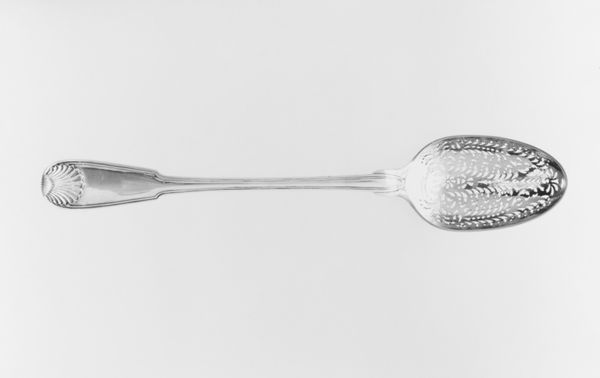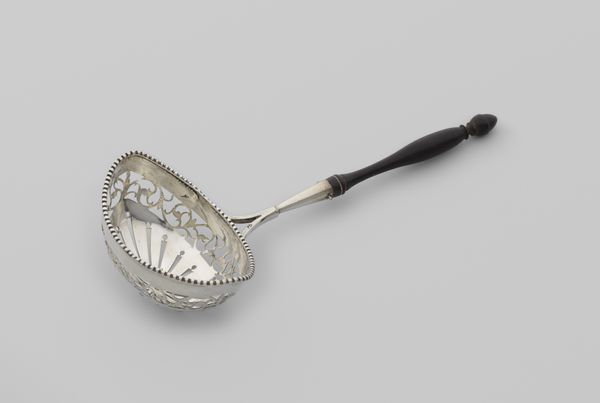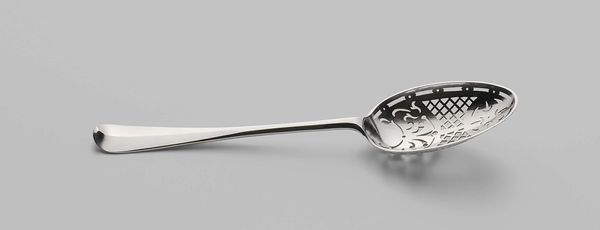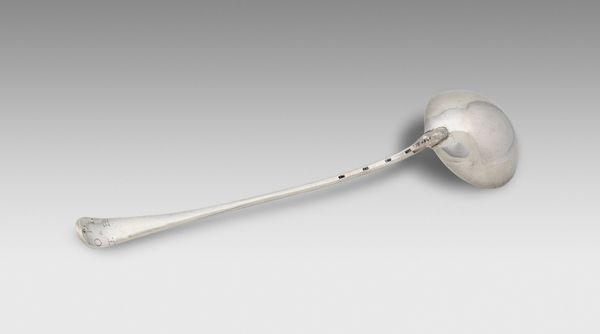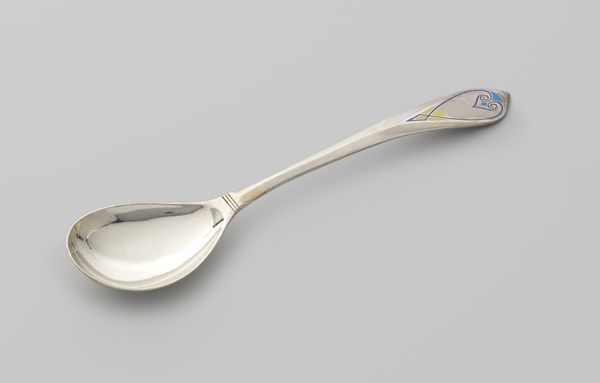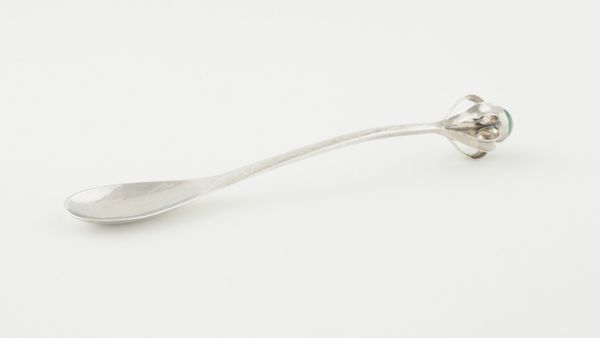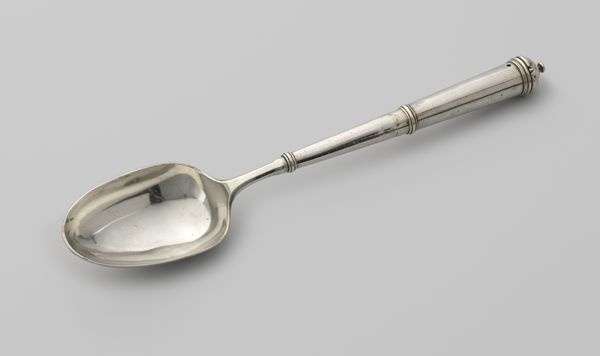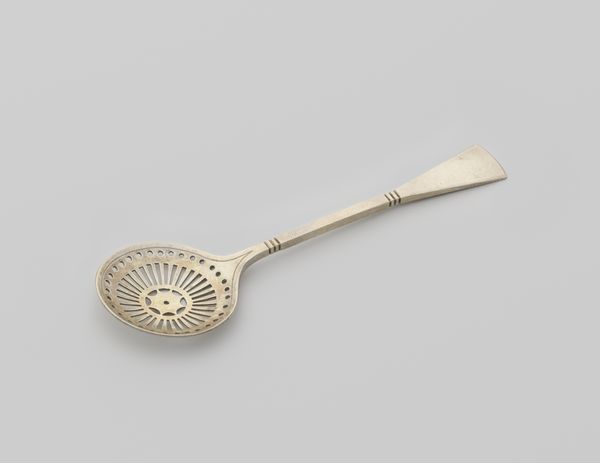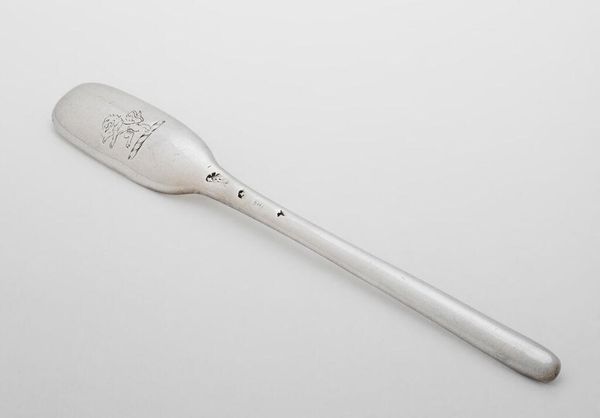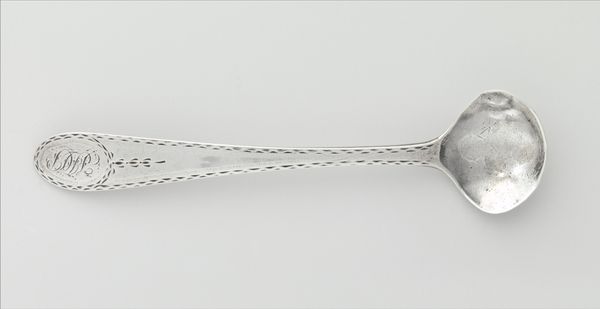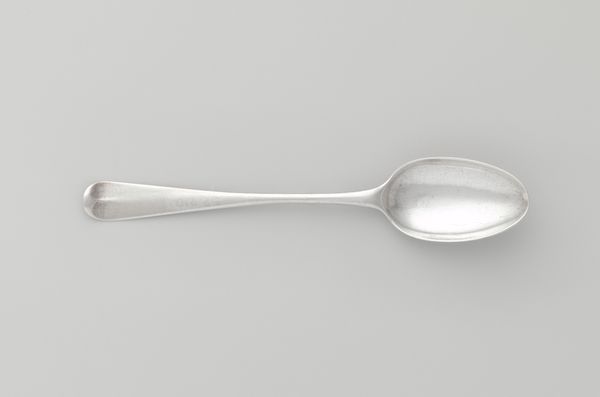
Dimensions: length 39.7 cm, width 13.2 cm, depth 2.9 cm, weight 206 gr
Copyright: Rijks Museum: Open Domain
Hendrik Griste, who lived from 1722 to 1784, fashioned this silver fish slice, a seemingly straightforward utensil, against a backdrop of significant social stratification. In 18th-century Netherlands, the Dutch Republic was a major maritime power, and fish formed a crucial part of the diet, economy, and cultural identity. Silverware like this wasn’t merely functional; it signaled prosperity and status. The intricate design and the material itself were visual cues about the owner's place within the socio-economic hierarchy. Fish became a symbol loaded with commercial, political, and even religious meaning, given the role of the sea in Dutch history. To fully grasp its significance, we delve into period cookbooks, trade records, and sumptuary laws. These sources illuminate the relationship between dietary habits, displays of wealth, and broader cultural values. The beauty and complexity of the silver fish slice becomes more profound when seen as a reflection of the dynamic society that produced it.
Comments
No comments
Be the first to comment and join the conversation on the ultimate creative platform.

